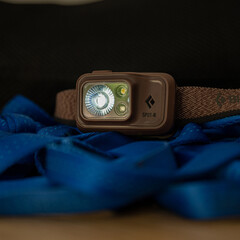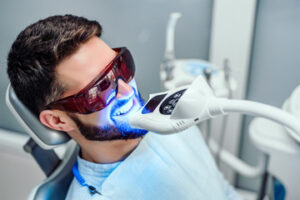Headlamps are the computer processors of outdoor gear, helping us go farther and faster after dark. They’re also indispensable safety nets if something goes wrong while you’re out.
Lumens can be misleading when comparing headlamps; beam distance is a better performance indicator. Also, look for a regulated brightness feature that stays consistent through the headlamp’s entire rated burn time.
Brightness is a key factor in selecting the right headlamp. Headlamps come in different levels of brightness, measured in lumens, with higher numbers reflecting greater luminosity. In general, a higher number means a brighter light, but there are a few other factors to consider as well. For example, headlamps with multiple power modes can allow users to dial in the exact amount of illumination required for a given situation. This feature can help users conserve battery power and extend the life of their headlamp between charges. Some headlamps also include a red light mode, which allows users to preserve their night vision while hiking or camping and avoid blinding others with white light.
Headlamps with dual fuel allow users to switch between rechargeable Li-ion batteries or standard alkaline cells for use in remote areas without charging ports. This option expands the versatility of headlamps to make them suitable for a wider variety of outdoor adventures and work activities.
Rechargeable headlamps are the ideal lighting solution for runners, campers and backpackers, work professionals and anyone else who needs a powerful hands-free light. They can be recharged at home or in the office, then taken on an evening run, used as a flashlight for work around the house or car, or brought on camping or hiking trips to illuminate trails and campsites.
A rechargeable LED headlamp can be easily customized for the task at hand with independently controlled spotlight and floodlight modes. For trail running or nighttime hikes, a wide beam of light is best, while for more focused work tasks such as reading labels or repairing the car, a spot or narrower beam of light may be preferred.
Before the advent of LED technology, headlamp bulbs were either tungsten filaments or sealed beam units (like those in 1917 Cadillac headlights). During normal operation, tungsten boils off the surface of the filament and condenses on the bulb glass, blackening it and reducing the amount of light emitted from the lamp. Many tungsten headlamps were equipped with a “dipping” light function that allowed the driver to control the intensity of the low-beam light. Some tungsten headlamps even had a mechanism to produce left- or right-traffic low-beam patterns by rotating the bulb. Newer halogen and HID bulb designs typically do not have this functionality, though some do emit infrared energy that can thaw built-up snow or ice from the lens.
Battery Life
There are many reasons to opt for a rechargeable headlamp rather than a disposable one. While the initial cost may be more, a rechargeable headlamp pays off in terms of lower battery costs and environmental friendliness. The ability to switch from one lighting mode to another without having to wait for your battery to charge is a huge bonus, too. And with rechargeable headlamps that use Lithium batteries, manufacturers can claim they last all night long.
There’s nothing worse than running out of light in the middle of a night hike, or worse yet — figuring out you forgot to bring extra batteries to get you through to the next town. A rechargeable headlamp that uses a USB charger for easy and convenient recharging eliminates the need to carry a bunch of disposable batteries along on your trek, and it also reduces waste and makes the trip more sustainable.
In addition to allowing for quick and easy switching between different lighting modes, a good headlamp should have an indicator to let you know when it’s time to recharge your batteries. This is especially important if you want to keep your headlamp running for extended periods of time, or if you plan on using it during a power outage.
Most rechargeable headlamps will have a low lighting mode that is great for conserving battery life while still allowing you to see your surroundings. This can be helpful for camping, cooking in camp, or just exploring around a familiar area at night.
Some headlamps will even have a spotlight setting that can be used to illuminate objects at a farther distance, although this setting will usually require more power and therefore will reduce your battery runtime. In addition to letting you manually click between these two settings, some headlamps will automatically adjust between the two to conserve energy and brightness as conditions change.
Some headlamps will also come with a spare battery case that can be used to recharge the headlamp while you’re on the go, or can double as a power bank that you can use for other devices. The Black Diamond ReVolt, for example, offers this feature.
Red Light Mode
Many headlamps come with a red light mode that is useful in several situations. It can be used to preserve night vision for reading in your tent or star gazing and it reduces light pollution that interferes with the visibility of stars. It can also be helpful in areas where you may encounter wildlife that is sensitive to white lights. Red lights are also less likely to disrupt a nocturnal animal’s natural sleep patterns.
The red LED in a headlamp is usually filtered or separated out from the rest of the light with diodes to produce a distinct red color. The light from the LED is visible to animals that are sensitive to blue or white light but does not disturb their melatonin production and sleep cycles. Many hunters and outdoor enthusiasts prefer the use of a headlamp with a red light because it provides more effective lighting in their surroundings while still maintaining a low enough visibility that they can see what is happening around them.
A red light also reduces the glare that can blind you or cause your eyes to over-adjust to bright lights, which can be difficult when you are trying to navigate in the dark. It can also be a way to signal for help in an emergency situation. Most rechargeable headlamps include a red light mode in addition to their white modes.
When a rechargeable headlamp is not in use, it can be set to the dim or red light mode to conserve battery life. The low power mode uses a fraction of the output of the white light but provides sufficient brightness for navigation or reading.
In addition to saving on battery costs, a rechargeable headlamp will also save you the hassle of dealing with a pack of batteries. Rechargeable headlamps are typically powered by lithium ion batteries, which offer higher performance than traditional alkaline batteries and have built in safety features to protect against temperature changes. Some rechargeable headlamps can also be run on regular AA batteries as a backup, which is handy in case you forget your charger or are stranded somewhere without access to an electrical outlet.
Weight
The weight of a headlamp is a major factor for many ultralight backpackers and thru-hikers. Fortunately, the latest headlamps have become increasingly lighter and still perform well. Some use magnetic charging, a tech advancement that increases water resistance and eliminates potential failure points in the USB port cover or Type C connector. The Olight MH25 and Brynite flashlights are examples of this. Some of these headlamps can also function with replaceable batteries, an option that some prefer due to the speed of battery replacement and power consumption savings of using a low-power setting.
LED headlamps are the most popular because of their brightness and efficiency. Most models have multiple modes and runtimes, with a variety of beam patterns. The more advanced headlamps can also have additional features like an avalanche reflector and adjustable zoom, giving you more control over your lighting needs.
A headlamp should fit comfortably on your forehead and have easy-to-use controls with gloves. Many have a soft elastic headband that sits flush on your forehead. A few are designed to clip onto the brim of your hat, a feature that works great for winter sports and hikers. Some headlamps have a single large button that is easier to operate when wearing gloves. Some have a lockout mode, which disables the light while in your pocket or pack. The Nitecore NU25 UL, for example, has a lockout mode that is activated by pressing both buttons simultaneously.
Some headlamps have a memory function that starts them in the last brightness mode you used. This is a handy feature for camp chores, trail-running, and other activities that require you to cycle through different modes regularly. Others have the ability to adjust the light frame size to change beam intensity and focus. The BioLite HeadLamp 200, for example, can spin the lens to switch between a flood and spot pattern.
Some headlamps have a red light mode that preserves night vision and is useful for signaling. This is a good feature to have for emergencies when you want to avoid disturbing others. Other headlamps have a flashing red light that can be helpful to locate your pack or luggage when camping or hiking in an unfamiliar area.


